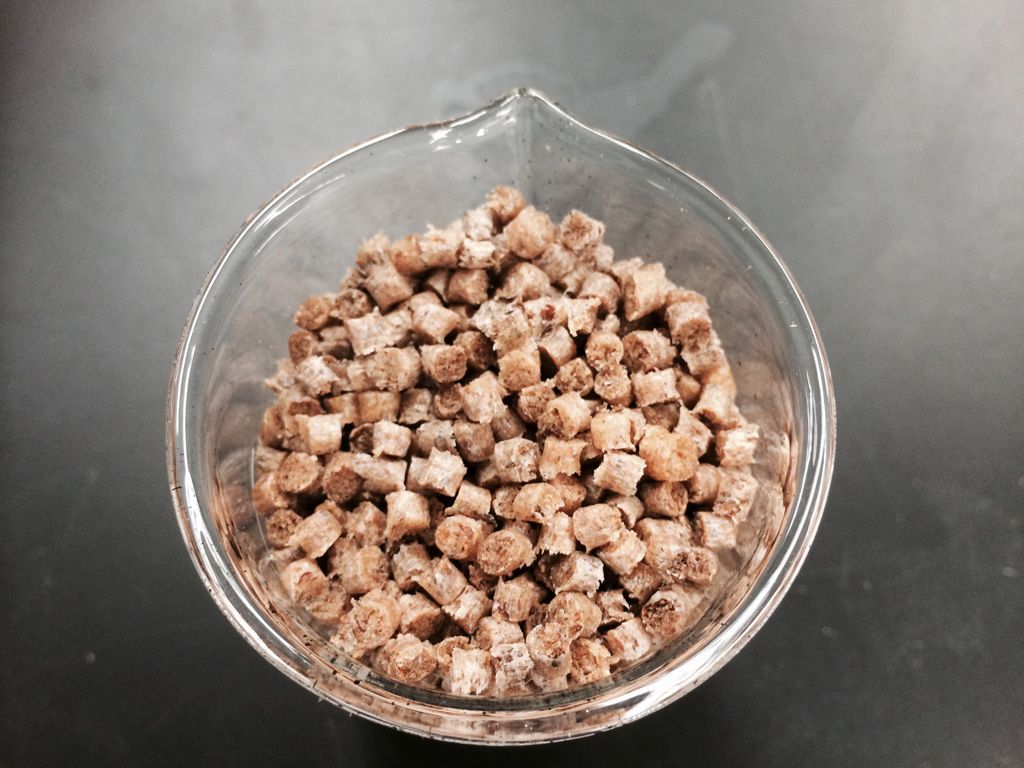Making Car Parts From Tomatoes
Ford and Heinz want to replace barrels of petroleum used in manufacturing with buckets of tomato skins
/https://tf-cmsv2-smithsonianmag-media.s3.amazonaws.com/filer/3b/ef/3beff06a-d0c5-4003-8827-344e8a3f1e4d/tomato_pomace.jpg)
Usually, finding ketchup residue in your car is a bad thing. But what if the ketchup in question wasn’t caked onto your cup holder—what if it actually was the cup holder?
Last week, the Ford Motor Company announced a partnership with Heinz to develop a new type of plastic derived from the waste left over from making ketchup: tomato skins, specifically. It’s still early, but Ford hopes the tomato-based compound will one day replace wiring brackets and storage bins on its production cars.
It’s a good deal for Heinz, too. The condiment company processes more than two million tons of tomatoes a year, but until now has had no good use for the refuse.
The program is part of Ford’s ongoing effort to replace many petroleum-based car parts with sustainable materials; the automaker has been running a research and development lab focused on developing plastics from renewable sources and other waste since 2000. Other manufactuers, including Mazda, Fiat, and Toyota, have also been taking steps to integrate renewable resources into their vehicles.
It’s a good plan for marketing, but even more so for the company's bottom line, considering the price of oil is currently more than $113 per barrel, and more of a car today is plastic than it has ever been. For a little context: when Ford's plastics research department opened, the price of oil was about $50 a barrel, recalls Debbie Mielewski, a technical leader in research and development since the team's inception.
The lab’s first renewable plastic launched on the 2008 Mustang. In that car, a soy-based polyurethane foam replaced the typical petroleum-based foam used in a portion of the seat cushion and headrest padding. Today, Ford says that all of its domestic vehicles use the foam in the seat cushions; 75 percent of them also have it in the headrest.
Other material innovations have followed. The company has launched rear storage bins made with wheat-straw-reinforced plastic on the 2010 Ford Flex, door bolsters (an insulating layer) out of the kenaf plant on the 2013 Escape, and suede made from recycled yams in the Taurus SHO.
What makes tomato refuse attractive is that it could be used to make lighter plastics than the kinds current materials allow. And the lighter the car, the better its fuel economy will be. Right now, the plastic used in the areas Ford is targeting for the tomato-based plastic rely on talc. Talc, like the petrol used to make the rest of the compound, is a mined resource, and therefore, is limited.
But how exactly do you take tomatoes from pulp to plastic?

It takes a little bit of prep work to get the fruit's refuse ready for molding. First the fibers are ground and dried. Then, the team adds a molten plastic as a binder and runs the mixture through an injection mold.
Current samples of the material contain about 20 percent tomato, and 80 percent plastic from other sources. But Mielewski isn’t bothered by the small percentage.
“We’re still talking about a ton of value, because millions of applications for this could pop up,” she says. “We already see a lot of soy-based materials used in office furniture and mattresses. And we want that; we want other industries to take advantage of our technology.”
The long-term goal is to create a material derived from 100 percent renewable resources, such as, say, a tomato-reinforced corn resin. In that case, Mielewski says, that car part in question would not only be sustainable, but also compostable.
In the meantime, the lab is putting the tomato-infused plastic to the test to make sure it will meet current vehicle safety requirements. Plastics, for instance, need a certain level of resistance, but also a certain level of give. And the standard vary depending on the material’s location in the car.
Tomato-infused plastic is only one facet of the lab’s current portfolio.
One of their most-recent advances is featured on the 2014 Lincoln MKX. The material, a replacement for fiberglass, is a polypropylene reinforced with tree fibers. The material is lighter in weight, but higher in density, than its glass-based predecessor.
“We’re looking at a variety of materials,” Mielewski says, “One is recycled currency. We’re looking at dandelion rubber, which will give us a domestic source of rubber. We’re looking at corn. We’re looking at sugar cane—anything that there’s a large excess of or that we can grow quickly and sustainably.”
The end-goal for Mielewski’s team is to develop many different plastics with a broad range of strengths and functions. A piece of plastic on the instrument panel, for instance, has to meet different safety requirements than the plastic inside a cup holder in the back seat. “If we have this big portfolio of materials,” she says, “we could [one day] replace every plastic part of the car.”
But, as The Christian Science Monitor points out, that dream isn't so easily achieved:
Recycling old materials and creating new ones from waste takes time and considerably more money -- at least in the initial phases. That's a deterrent to managers and shareholders focused on the bottom line.
There are also limits to the safety and effectiveness of these new materials. Plant-derived products may be fine for building storage bins, but no one's found a way to use them as substitutes for sheetmetal. (Though that hasn't kept some from trying.)
There’s no timeline for Ford's new tomato-based plastic—after testing it has to make its way through product development and be worked into Ford’s supply chain. The process can take time—the soy-based foam seating, for instance, took six years to develop—but can also move very quickly—as in the case of the wheat straw storage bins, whose approval took only 18 months. Either way, however, Mielewski says she’s optimistic.
/https://tf-cmsv2-smithsonianmag-media.s3.amazonaws.com/accounts/headshot/me.jpg)
/https://tf-cmsv2-smithsonianmag-media.s3.amazonaws.com/accounts/headshot/me.jpg)